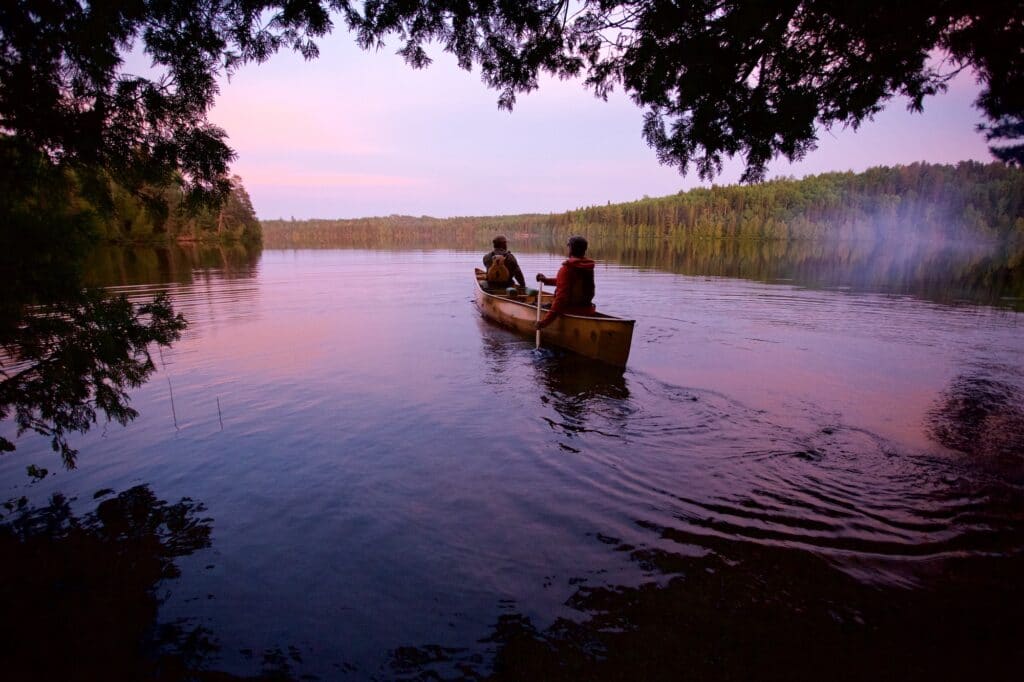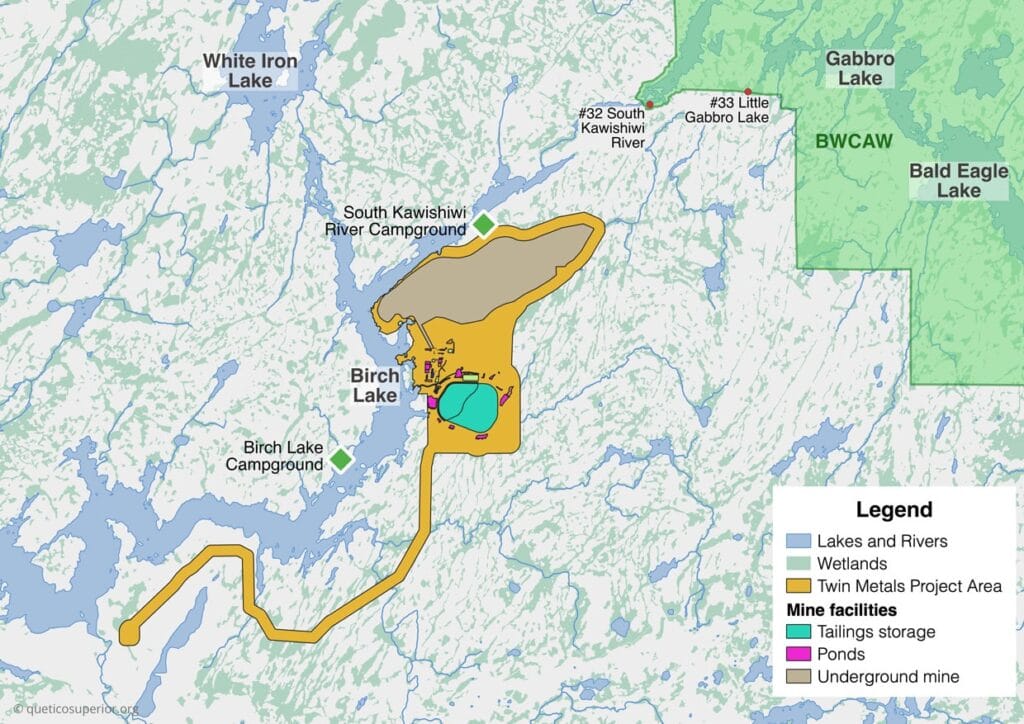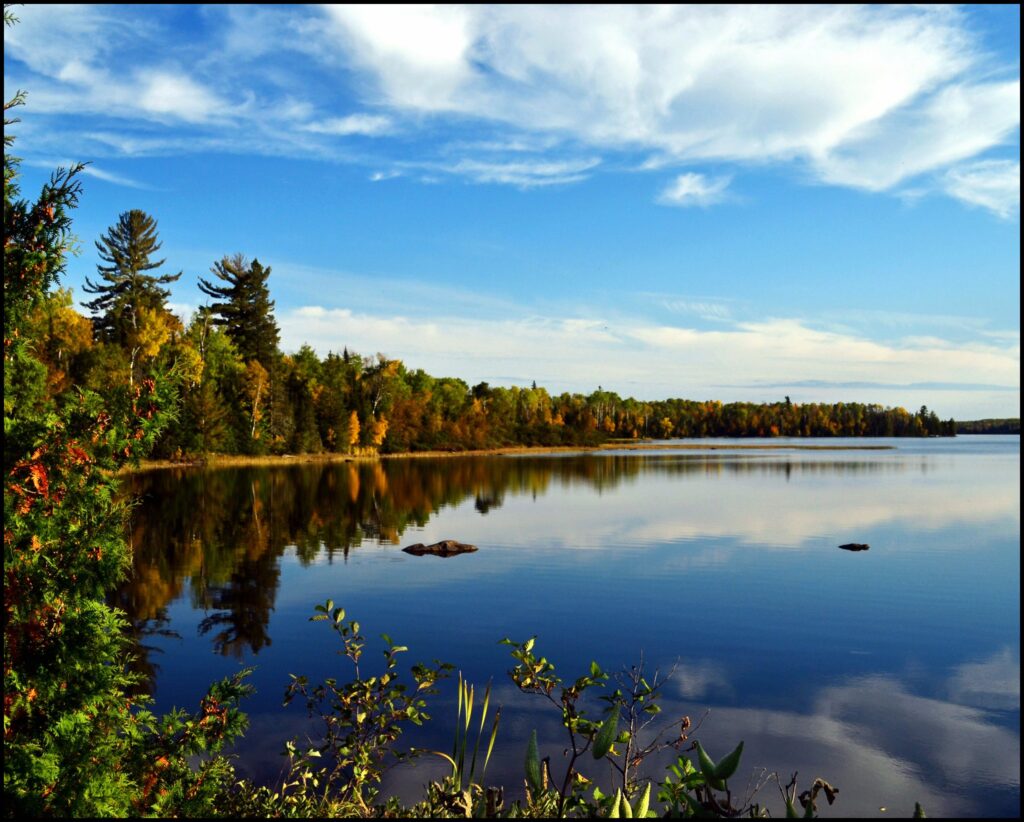
The proposed Twin Metals copper mine in northern Minnesota has put the Boundary Waters Canoe Area Wilderness on the list of America’s Most Endangered Rivers. Advocacy group American Rivers announced Tuesday that the Boundary Waters is ranked third most endangered nationally, at risk of serious pollution if the mine is allowed to operate.
The Most Endangered Rivers report has been issued every year since 1984. It highlights rivers that are facing major decisions in the year ahead, encouraging officials to protect them. The organization is highlighting this year how local groups are leading protection efforts, and how access to clean and healthy rivers is an issue of justice.
“If we want a future of clean water and healthy rivers everywhere, for everyone, we must prioritize environmental justice,” said Tom Kiernan, president of American Rivers.
Supporting partners for this year’s designation are Northeastern Minnesotans for Wilderness/Save the Boundary Waters, The Wilderness Society, Outdoor Alliance, and the American Canoe Association.
“The America’s Most Endangered Rivers report is a call to action to save rivers facing urgent decisions,” said Jessie Thomas-Blate with American Rivers. “Sulfide-ore copper mining pollution poses an unacceptable risk to the clean rivers, streams and lakes of the Boundary Waters, and this is the year we must finally stop these mining proposals once and for all.”
Pointing out that the Boundary Waters is the most popular wilderness area in America, and that mining sulfide ore produces large amounts of dangerous waste, the group says it’s “the wrong place for the wrong mine.”

Copper-nickel mine proposals in northern Minnesota have earned regional waterways spots on the list several years in the past decade. The South Kawishiwi River, which flows out of the wilderness, past the Twin Metals site, and back into the Boundary Waters, was first listed in 2013 and the wilderness was also listed in 2018. The nearby St. Louis River, threatened by the PolyMet mine proposal, was designated in 2015.
“The Boundary Water(s) offers a wild and pristine paddling experience in the continental United States that is second to none,” said Brett Mayer with American Canoe Association. “Pollution from sulfide mining risks irreparably damaging a hallowed landscape in the world of paddling and it has been our longstanding hope that elected officials move to permanently ban sulfide-ore copper mining in the watersheds of the Boundary Waters.”

American Rivers argues that not only does mining pollution threaten clean water and outdoor recreation, it could hurt also hurt a resource that supports 17,000 jobs and generates more than $913 million in sales annually.
“The Boundary Waters is America’s most popular Wilderness, a vibrant and fragile ecosystem, and a cornerstone of a local economy that sustains thousands of livelihoods,” said Tom Landwehr, Executive Director of the Campaign to Save the Boundary Waters. “It needs to be permanently protected from the threat of sulfide-ore copper mining.”
The group is urging federal decision-makers to take action to protect the wilderness. They call on the Biden administration to issue a federal mineral withdrawal, and for Congress to pass legislation that will permanently prohibit mines in the wilderness watershed. Rep. Betty McCollum authored such a bill last year, and American Rivers reports similar legislation will soon be introduced again.
Wilderness supporters can contact their member of Congress and ask them to support the legislation.
More information
- America’s Most Endangered Rivers of 2021
- America’s Most Endangered Rivers, #3: Boundary Waters, MN – American Rivers

